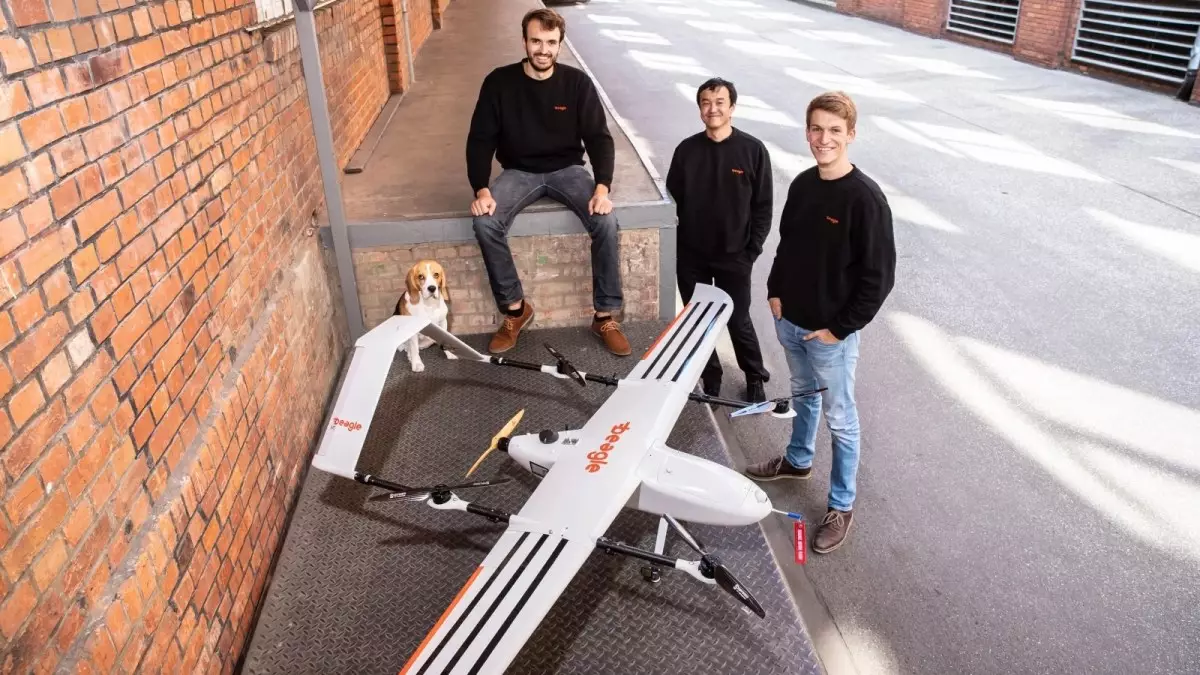In a landscape where timely and accurate infrastructure inspections have never been more crucial, especially for energy sectors, the reliance on conventional methods poses limitations. Helicopters have been the go-to solution for inspecting and maintaining critical components such as electricity pylons and gas pipelines. However, the emergence of drones presents a formidable alternative. These unmanned aerial vehicles (UAVs) can navigate complex terrains without putting human lives at risk while also reducing operational costs. The potential for these drones, especially long-range models, to transform the way we monitor and maintain infrastructure is not merely theoretical—it’s becoming a reality.
Innovations from Beagle: A New Contender in the Market
One company leading this innovative wave is Beagle, based in Hamburg, Germany. Recently, Beagle secured €5 million in Seed funding, affirming investor confidence in its technology. The drones they’ve developed are touted as “computers with wings,” demonstrating their sophisticated technology designed to operate autonomously and comply with stringent EU regulations. Co-founder Oliver Lichtenstein emphasizes the efficiency of their solution: customers pay per kilometer of pipeline inspected. With a business model that effectively ties revenue to service utilization, Beagle has made significant inroads into long-term sustainability and profitability.
By distinguishing itself with superior data resolution—reportedly 75 times greater than that which satellites can provide—Beagle not only offers a disruption to the market but does so at a reduced cost with minimal emissions compared to traditional aircraft. This environmentally conscious approach resonates well within the modern framework of sustainability, appealing to clients who are increasingly aware of their ecological footprints.
The Implications of Dual-Use Technology
While the company has publicly focused on civilian applications, the underlying technology raises important conversations regarding its potential ‘dual-use’ applications. In an era where infrastructure vulnerabilities can be heightened due to geopolitical tensions, the ability to conduct real-time surveillance becomes paramount. Nikolas Samios, Managing Partner at PT1, hints at these broader implications, suggesting that Beagle’s drones could serve essential roles in ensuring the safety and integrity of vital infrastructure. This opens a discussion about the responsibility firms have when introducing advanced technologies that could be adapted for military or surveillance usage.
Interestingly, while Beagle is enhancing capabilities in the civilian sector, maintaining a strict compliance stance does give them a competitive edge. Their “fully EU” solution puts them at an advantage where data sovereignty and trust play increasingly critical roles. In the context of global tensions, consumers and businesses alike tend to favor solutions that align with domestic regulations and safety standards.
Competitive Landscape and Market Potential
Beagle doesn’t operate in a vacuum; it’s aware of its competitors, such as Intero and Nearmap, who also offer complimentary drone services for infrastructure inspections. However, the long-range capacity coupled with EU compliance places Beagle in a unique position to carve out a significant niche within a market already valued at €2 billion across the EU. As regulatory standards tighten like their upcoming methane emissions tracking requirements, the demand for cost-effective and reliable inspections will only grow.
Lichtenstein and his team are not merely riding a wave of technological advancement; they are pioneering a shift that addresses both current and future needs of energy infrastructure inspection amid evolving regulatory landscapes. This adaptability could prove to be the decisive factor for their success as they strive to capture a larger market share while safeguarding essential systems that underpin social and economic stability.
A Vision for the Future
The implications of deploying advanced drone technology for infrastructure inspections extend well beyond immediate economic benefits. With energy, telecommunications, and other sectors leaning toward technological integration for efficiency and safety, Beagle’s innovations are in alignment with global trends toward modernization. The push for real-time monitoring could ultimately contribute to enhanced safety protocols, reducing the risk of failures that stem from delayed inspections or oversight.
As the company ramps up its operations in the dynamic landscape of energy infrastructure, their trajectory could very well redefine industry standards. The combined influence of sustainability, technological prowess, and strategic business models positions Beagle at the forefront of the drone revolution—a development that many industries keenly watch as they navigate the complexities of the modern world.

